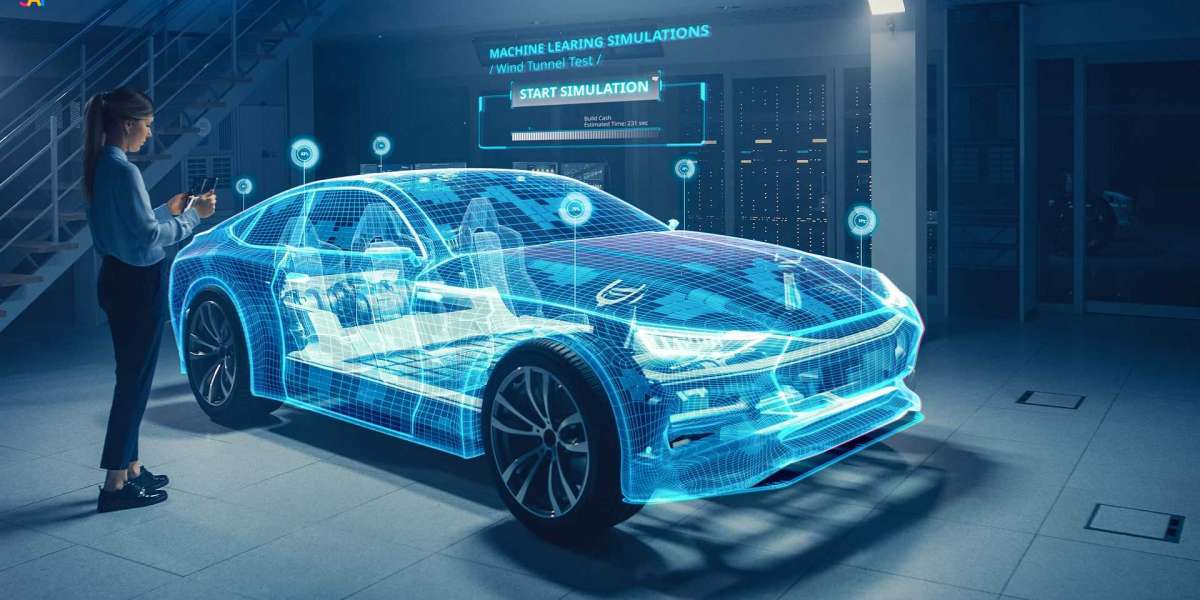Augmented reality (AR) is rapidly transforming the automotive industry, bringing innovative solutions that enhance driving experiences and vehicle functionality. This technology overlays digital information onto the real world, providing drivers with enhanced visibility, real-time data, and interactive experiences. From navigation aids to safety features, AR is reshaping how drivers interact with their vehicles and the road. This blog post explores the various ways in which augmented reality is revolutionizing automotive technology.
Augmented Reality in Navigation Systems
One of the most prominent applications of augmented reality in the automotive industry is in navigation systems. Traditional GPS systems provide directions through audio cues or maps displayed on a screen, but AR takes this a step further by projecting navigation instructions directly onto the windshield. This allows drivers to see turn-by-turn directions overlaid onto the road ahead, reducing the need to glance away from the road to check a screen.
This enhancement not only improves convenience but also contributes to road safety. By keeping drivers' eyes on the road, AR navigation systems help reduce distractions, allowing for quicker and safer decision-making. Additionally, AR can highlight landmarks, street names, and points of interest, making navigation more intuitive and user-friendly.
Enhancing Safety Through AR
Safety is a top priority in automotive design, and augmented reality is playing a significant role in advancing vehicle safety features. AR can project critical safety information onto the windshield, such as the distance to the car in front, lane departure warnings, and collision alerts. This real-time information allows drivers to react more quickly to potential hazards, reducing the likelihood of accidents.
Furthermore, AR can enhance visibility in challenging driving conditions. For example, during foggy or rainy weather, AR can highlight the edges of the road or the position of other vehicles, helping drivers maintain control and avoid collisions. This level of enhanced awareness is particularly beneficial for night driving or in unfamiliar areas where visibility might be limited.
Augmented Reality and Driver Assistance
Augmented reality is also making strides in driver assistance systems. AR can provide visual cues to assist with parking, merging, and lane changes. For instance, when parking, AR can project guidelines onto the windshield, showing the exact trajectory of the vehicle. This helps drivers maneuver in tight spaces with greater precision.
Additionally, AR can assist in traffic situations by highlighting vehicles in blind spots or providing warnings about approaching vehicles during lane changes. By offering real-time visual assistance, AR reduces the cognitive load on drivers, making complex driving tasks easier and safer to perform.
Augmented Reality in Scrap Car Recycling
Augmented Reality (AR) is revolutionizing scrap car recycling by enhancing efficiency and accuracy in the process. Through AR technology, salvage yards like cash for junk Nissan cars can provide real-time, interactive information about a vehicle’s parts and materials, aiding in quicker and more informed decision-making. This instant access to detailed data streamlines the dismantling and sorting of scrap cars, ensuring that valuable components are properly identified and processed.
Furthermore, AR supports staff training by offering step-by-step visual guides, which simplifies complex procedures and improves safety. By optimizing inventory management with real-time updates on parts status and location, AR helps reduce errors and maximize the economic benefits of recycling. As AR technology evolves, its role in the recycling industry is set to expand, driving greater efficiency and sustainability.
Improving In-Car Entertainment and Information
Beyond safety and navigation, augmented reality is enhancing the in-car entertainment and information experience. AR can create interactive displays that provide information about the vehicle’s performance, such as speed, fuel levels, and engine status, all projected onto the windshield. This allows drivers to access critical information without taking their eyes off the road.
For passengers, AR can transform the in-car entertainment experience. By integrating AR with infotainment systems, passengers can enjoy interactive media, games, or even augmented views of the surroundings, making long journeys more enjoyable. This integration of AR into the car's interior environment is part of the broader trend of creating more connected and immersive automotive experiences.
Also visit: https://www.cashforcarnearby.com.au/
The Future of Augmented Reality in Automobiles
As technology continues to advance, the potential for augmented reality in the automotive industry is vast. Future developments may include fully immersive AR experiences that integrate with autonomous driving systems, allowing passengers to engage with their surroundings in entirely new ways. For instance, AR could provide a virtual tour of a city as the car drives through it, highlighting historical landmarks or offering restaurant recommendations based on the passenger's preferences.
Moreover, AR could be used to enhance vehicle maintenance by providing mechanics with real-time, augmented instructions overlaid onto the car's components, streamlining repairs and reducing errors. This application of AR would extend the technology's benefits beyond the driving experience, offering value throughout the vehicle's lifecycle.
Conclusion
Augmented reality is set to play a pivotal role in the future of automotive technology, offering enhancements in safety, navigation, driver assistance, and in-car entertainment. By integrating digital information with the real-world driving environment, AR provides drivers with the tools they need to navigate more safely and efficiently. As the technology continues to evolve, we can expect even more innovative applications that will further transform the automotive industry, making driving a more connected and engaging experience.




